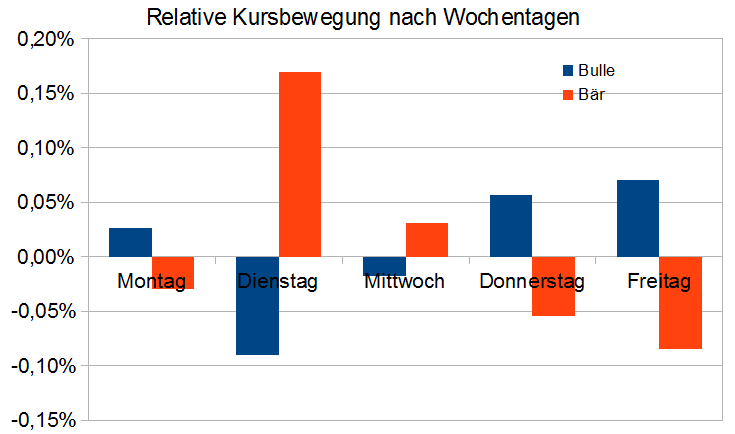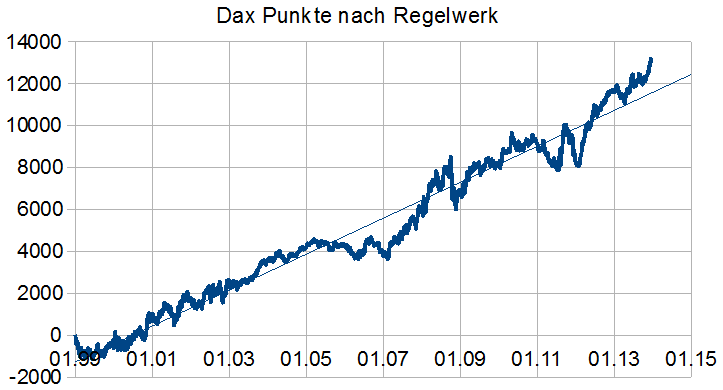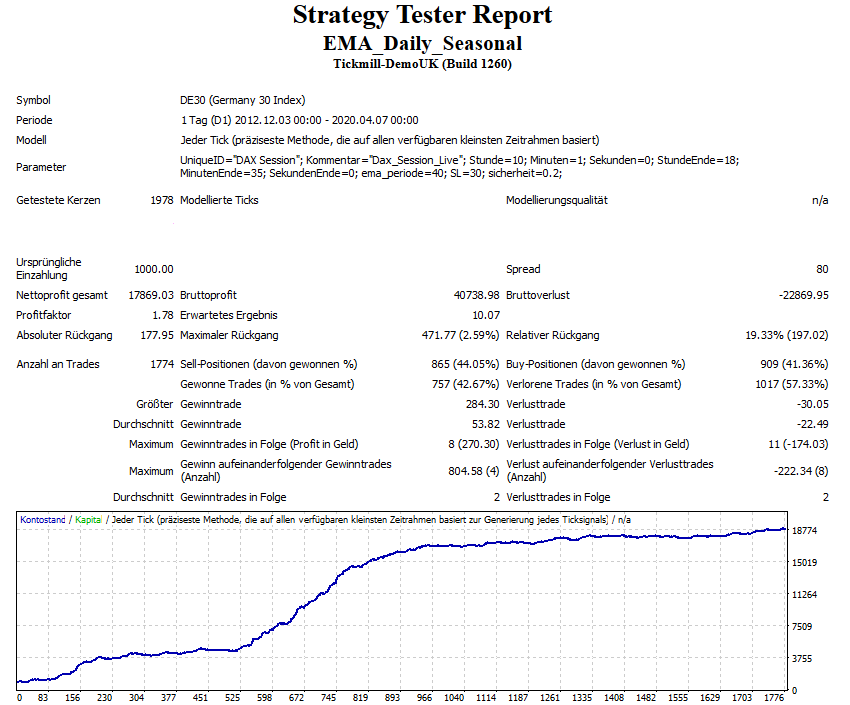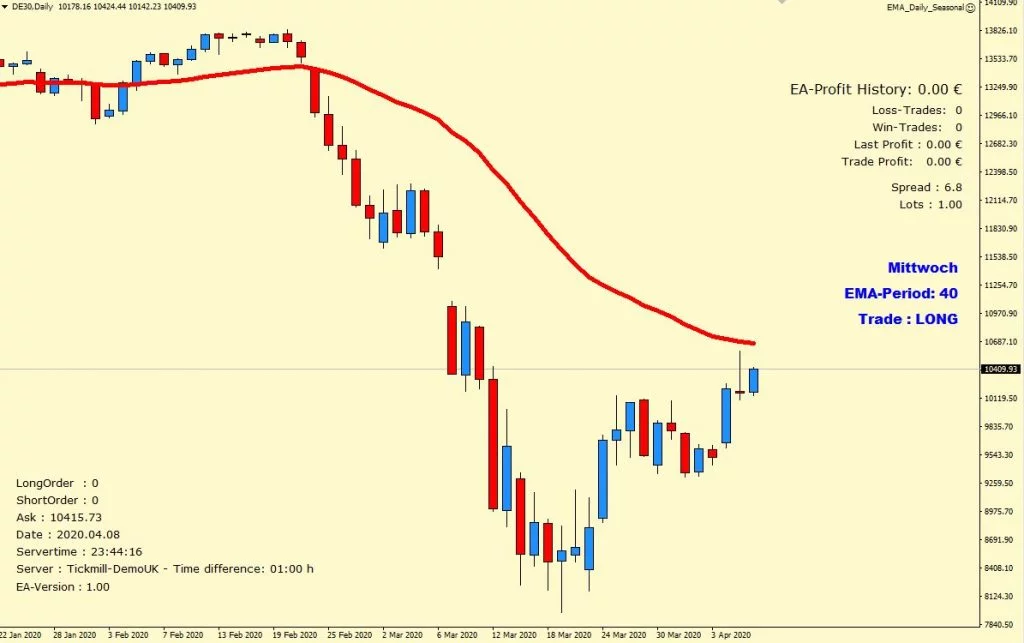The result is astonishing:

Now we immediately recognize a striking and clear connection. In a bull market, prices rise on Monday, Thursday and Friday, while prices tend to fall on Tuesday and Wednesday. In a bear market, it is exactly the other way around.
So if you are looking for a buy signal in a bull market, you should get in at the end of the week and avoid Tuesday at all costs. The question of "why" is of course exciting, but for us it is pure speculation. One could certainly write great stories here, but more interesting is:
Can this probability advantage now be immediately converted into a profit advantage?
Here we can now do a simple calculation according to fixed rules and then carry out a profit calculation using the historical data. If the opening price on a day is above the EMA80 of the previous day (=> bull market) and we have a Monday, for example, a long position is opened and closed at the end of the day. On a Tuesday you would buy a short position at the opening (in a bull market) and also sell it again at the end of the day. If you apply this simple rule to the historical data, you get the following summation of the FDAX points.

In total, you would have collected almost 14,000 FDAX points in 14 years. So a probability advantage became a real profit advantage. On closer inspection, you would now take into account the real spread (difference between the buying and selling price) and certainly also define a stop loss for the individual trades. The basic system is impressively simple and offers numerous optimization options.




